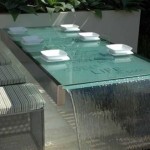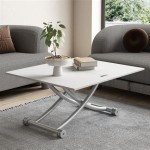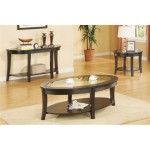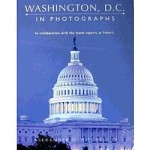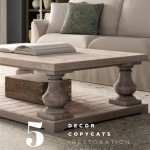Coffee Table Legs For Round Table: A Comprehensive Guide
The coffee table, a staple in living rooms and common areas, serves as a functional and aesthetic centerpiece. When selecting a coffee table, the shape is a primary consideration. Round coffee tables offer a softer visual appeal and promote easier traffic flow in confined spaces. However, the choice of coffee table legs plays a pivotal role in not only supporting the table but also in dictating its overall style and stability. This article delves into the various aspects of choosing the right coffee table legs for a round table, exploring materials, styles, height considerations, and attachment methods.
Material Selection: Balancing Aesthetics and Functionality
The material of the coffee table legs significantly impacts the table's durability, aesthetic appeal, and overall cost. Common materials include wood, metal, and acrylic, each offering distinct properties and visual characteristics.
Wood Legs: Wood legs are a classic choice, offering warmth and versatility. They can be crafted from various wood species, each with its unique grain pattern and color. Hardwoods like oak, maple, and walnut provide superior durability and resistance to wear and tear, making them ideal for high-traffic areas. Softwoods like pine and fir are more affordable but may require more care to prevent scratches and dents. Wood legs can be stained, painted, or left natural to complement the surrounding décor. The specific wood species and finish should be carefully considered to ensure compatibility with the round table's top material and the overall design scheme.
Metal Legs: Metal legs offer a modern and industrial aesthetic. Steel and iron are popular choices, providing excellent stability and strength. Metal legs can be powder-coated in a variety of colors, offering customization options to match existing furniture. Stainless steel is a particularly durable option, resistant to rust and corrosion, making it suitable for environments with higher humidity. Metal legs can be designed in a range of styles, from minimalist hairpin legs to more elaborate geometric designs. The gauge and construction of the metal leg are critical factors in determining its weight-bearing capacity and overall stability.
Acrylic Legs: Acrylic legs offer a contemporary and transparent aesthetic. They provide a visually light and airy feel, making them suitable for smaller spaces where minimizing visual clutter is crucial. Acrylic is a durable and impact-resistant material, although it is susceptible to scratches. The clarity and thickness of the acrylic will influence its aesthetic impact and structural integrity. Acrylic legs can be shaped into various forms, offering design flexibility. However, it's important to ensure the acrylic legs are properly manufactured and attached to the table top to prevent cracking or instability.
Style Considerations: Harmonizing Legs with Tabletop and Decor
The style of the coffee table legs should complement the round table's tabletop and the overall décor of the room. The legs contribute significantly to the table's visual character, influencing whether it exudes a traditional, modern, rustic, or eclectic vibe.
Hairpin Legs: Hairpin legs are a popular choice for round coffee tables, offering a minimalist and mid-century modern aesthetic. These legs are characterized by their slender, angled design, resembling hairpins. Hairpin legs are typically made of metal and are available in various finishes, including raw steel, powder-coated colors, and chrome. Their simple design makes them versatile, complementing a wide range of tabletop materials and décor styles. The number of rods in each hairpin leg (typically two or three) affects its stability and load-bearing capacity. For larger or heavier round tabletops, three-rod hairpin legs are recommended.
Tapered Legs: Tapered legs offer a classic and elegant look. These legs gradually narrow from top to bottom, creating a refined and sophisticated appearance. Tapered legs are typically made of wood and can be stained or painted to match the tabletop or other furniture in the room. They are often associated with mid-century modern and Scandinavian design styles. The degree of taper can vary, from subtle to more pronounced, affecting the overall visual impact of the table. The joinery of the tapered legs to the table top is crucial for stability and should be carefully considered.
Pedestal Base: A pedestal base provides a central support for the round coffee table, eliminating the need for individual legs. Pedestal bases can be made of wood, metal, or a combination of both. They offer a clean and uncluttered look, making them suitable for contemporary and minimalist spaces. Pedestal bases can be simple and cylindrical or more elaborate and sculptural. The size and weight of the pedestal base must be adequate to support the round tabletop without wobbling or tipping. The design of the pedestal base should also be visually balanced with the tabletop's size and material.
Industrial Legs: Industrial legs evoke a raw and utilitarian aesthetic. These legs are typically made of metal and often feature exposed hardware, such as bolts and rivets. Industrial legs can be crafted from steel pipes, reclaimed metal, or other industrial materials. They are often paired with reclaimed wood tabletops to create a rustic and edgy look. The robustness and durability of industrial legs make them suitable for heavy-duty use. The finish of the metal can range from raw and unfinished to powder-coated or painted.
Height and Attachment: Ensuring Stability and Functionality
The height and attachment method of the coffee table legs are crucial for ensuring both its stability and functionality. The correct height ensures comfortable use, while a secure attachment method prevents wobbling and potential failure.
Height Considerations: The ideal height of a coffee table is typically 16-18 inches, which is approximately the same height as the seat of most sofas and chairs. This height allows for easy access to drinks and snacks without having to reach too far. However, the optimal height may vary depending on the specific furniture arrangement and personal preferences. For lower sofas or seating arrangements, a lower coffee table height may be more appropriate. Conversely, for higher sofas or chairs, a slightly taller coffee table may be preferred. It is important to measure the height of the surrounding seating to determine the most comfortable coffee table height.
Attachment Methods: The method of attaching the coffee table legs to the tabletop directly impacts the table's stability and longevity. Common attachment methods include screws, bolts, and adhesive. Screws are a simple and effective method for attaching legs to wooden tabletops. The screws should be long enough to securely penetrate the tabletop but not so long that they protrude through the other side. Pilot holes should be drilled to prevent splitting the wood. Bolts provide a more secure attachment than screws, especially for heavier tabletops. Bolt-on attachment often involves metal plates or brackets that are attached to the tabletop with screws. The legs are then bolted to these plates. Adhesive, such as epoxy, can be used in conjunction with screws or bolts to provide added strength and stability. However, adhesive alone is generally not sufficient for securing coffee table legs, especially for heavier tabletops. The attachment method should be carefully selected based on the weight of the tabletop, the material of the legs, and the desired level of stability.
Leveling and Adjustments: Ensuring that all the coffee table legs are level is crucial for preventing wobbling. Levelers, small adjustable feet that screw into the bottom of the legs, can be used to compensate for uneven floors. Levelers are particularly useful for tables placed on carpets or other uneven surfaces. They allow you to fine-tune the height of each leg, ensuring that the table is perfectly level. Levelers are available in various materials, including plastic, metal, and rubber. Rubber levelers also provide added grip, preventing the table from sliding on smooth surfaces.
Careful consideration of material, style, height, and attachment methods will facilitate the selection of coffee table legs that are not only aesthetically pleasing but also structurally sound and functional for use with round tables.

Coffee Table Base 121b Tulipe Metal Diy Furniture Flowyline Design

Round Coffee Steel Table Base Legs Metal Coffe Tischbeine Per Il Tavolo

Coffee Table Base 106 Namu Modern Furniture Flowyline Design

800mm Modern Round White Block Coffee Table With Spherical Legs Homary

More Like Home Round Coffee Tables 4 Easy To Build Styles Day 10

Metal Coffee Table Legs 446 Cleo 16h Luxurious Furniture Flowyline Design

Modern Round Coffee Table With Carved Pine Top And Metal Legs Natural Black Aosom Com

Modern Round Wood Coffee Table What We Make

850mm White Round Terrazzo Coffee Table With Pine Wood Legs In Walnut Homary

Diy Coffee Table Easy X Base With Round Top
